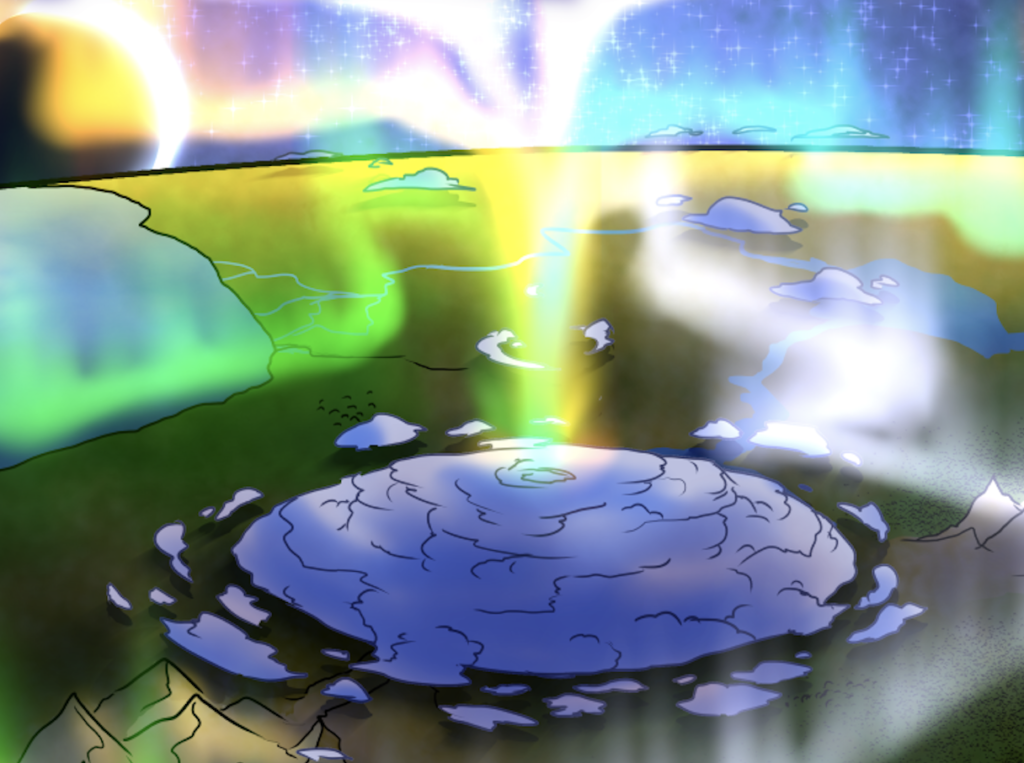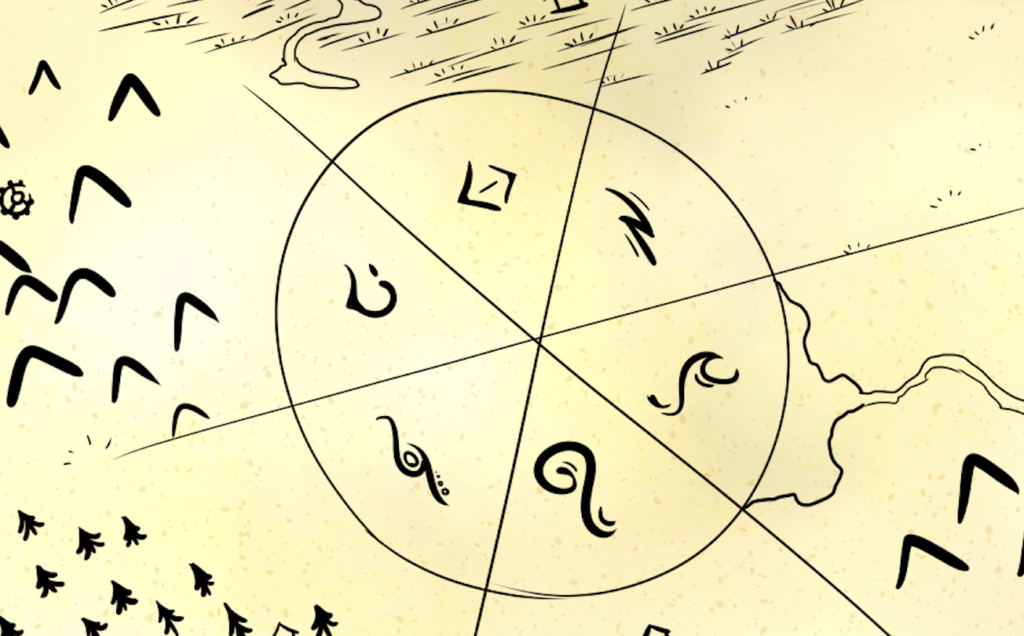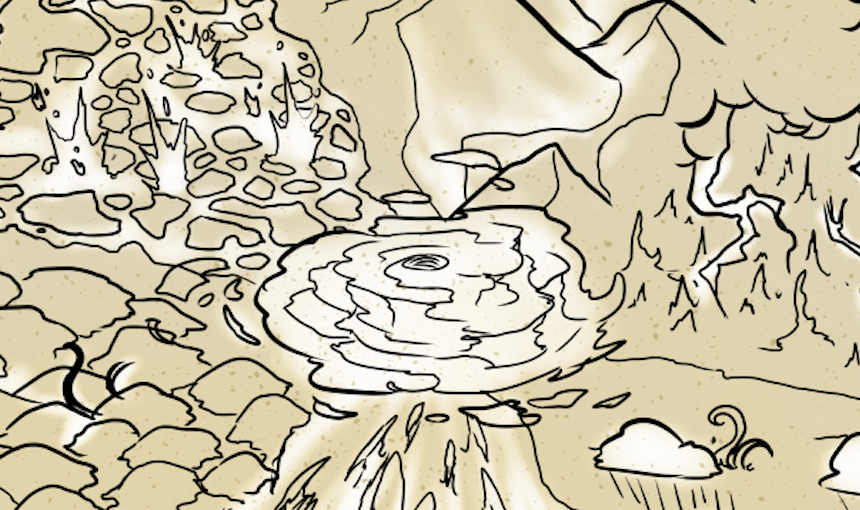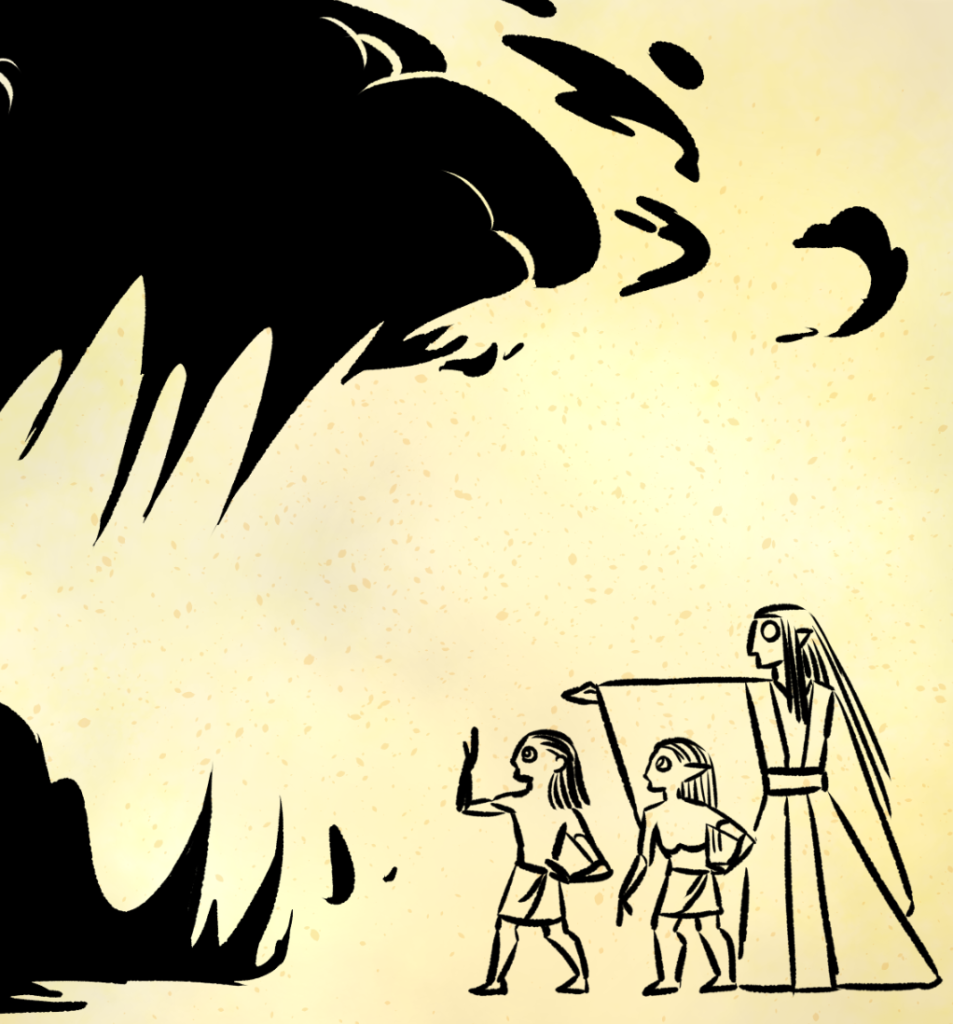The Storm
The Storm Of Magic is known by many regional names, but to avoid confusion, the accepted terminology in scholarly circles is typically simply “The Storm”, for there is only one, and all other storms pale in comparison to its scale and deadly ferocity.

The Storm is vast, roughly one hundred miles across. It does not move or rotate, and it does not stop.
To describe the Storm as a “weather phenomenon” is deceptive, for though it presents as a vast and circular storm cloud, the Storm is far from natural. It is considered to be the most intensely magical place on or in the world, as by way of a mechanism we do not understand, all ambient magic is pulled into the eye of the storm and redirected outwards according to its element.

The oversaturation of the elemental energies in these sectors has led to a dramatic alteration of the landscape. What was presumably once an ordinary grassland has been transformed into six very different environments under the shadow of the storm cloud – a volcanic wasteland, a roiling lake, a lightning-blasted desert, a wind-scoured gulley, an ever-changing mass of living stone, and a deadly mutative swamp.
These environments are treacherous on their own merit, but the greater threat is the miasma of energy that hangs over the storm itself. The body is simply unprepared to handle such high levels of raw elemental energy, and the untempered element winds can infiltrate even the most protected explorer and induce elemental corruption, unbalancing the body’s elemental makeup. It is this danger above all others that renders the storm totally impassible.

The presence of two separate Ancient ruin sites in the surrounding mountains, roughly equidistant from the Storm, has led some researchers to theorize that the ruins of the as-yet-undiscovered Second Ancient City may lie somewhere beneath the Storm. This question intrigues researchers and entices explorers to venture into the Storm despite the danger, because its answer could allow us to pinpoint when exactly the Storm first formed, and from there, perhaps, how it continues to exist.
The Storm was raging well before the element winds calmed enough to allow elves and humans to survive exposure to the surface, but while elves and humans survived and grew in the Caves, waiting for the world to welcome us into the light, the Ancients strode the surface without fear. Does the Storm predate even their great edifices, or did they witness its formation? Did it, perhaps, play some role in their cataclysmic civil war? Could they have even been responsible for its creation? Questions such as these have haunted us since we first emerged from the Caves, and as our shielding technology improves, perhaps one day we may finally see what resides in the eye of the Storm.
